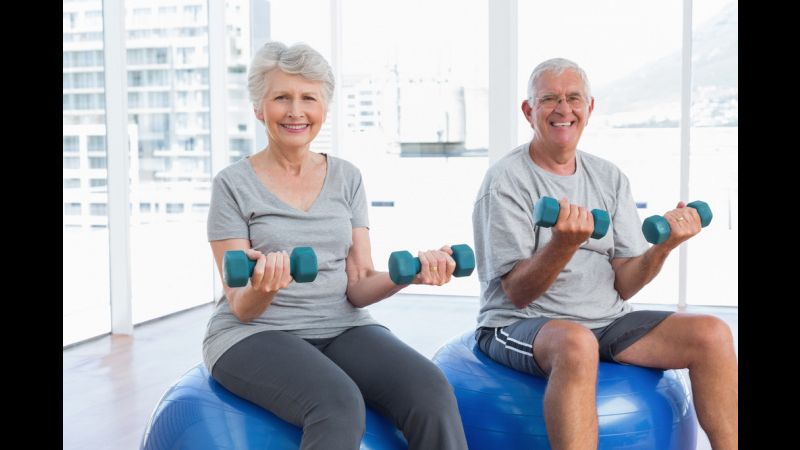We should all know by now that exercise promotes a long and healthy life, but it can be a difficult choice when deciding which exercise routine is best for you. Walking, yoga, swimming, tai chi, cycling, pilates – the options are endless! But some of these exercises might be better for some than others, especially for seniors who may be limited as to what exercises they can perform.
For those with limited mobility or for those who are just starting a new exercise routine, a new fitness trend among seniors could be the answer: functional fitness.
What is Functional Fitness?
A recent CNN article outlined the benefits of functional fitness for seniors. So what exactly is functional fitness? Functional fitness is great for seniors because it mimics the activities that you perform on a daily basis, such as lifting and carrying grocery bags from your car to your home and even putting those same groceries away on shelves or in cabinets.
Although it may not seem like it, these mindless activities require strength, balance, flexibility and stability, and more often than not, daily tasks require a combination of these skills. Functional fitness is one of the few exercises that recognizes this fact as it focuses on multi-joint activity.
Since functional fitness focuses on basic fitness activities seniors do on a daily basis, it promotes seniors’ independence along with relieving arthritis pain, reducing one’s risk of falling and lowering one’s risk of developing type 2 diabetes. We all lose muscle, balance and bone strength as we age – these are just signs of the natural wear and tear on the body, but functional fitness is a great option to help everyone regain their strength, regardless of age.
Functional Fitness Exercises
Interested in starting a functional fitness exercise routine? Classes focusing on functional fitness for seniors are increasingly being offered at gyms and community centers, and below are five of the most common functional fitness exercises that you can do at your own pace:
- Bend-and-lift-movements such as squatting are great exercises to do in the gym as they build up the strength you need to get in and out of a chair or pick something up off of the floor.
- The strength gained by doing single-leg movements like lunges are needed for many daily tasks, including walking, climbing up or down stairs and bending down on one knee to pick something up off the ground.
- Pushing movements are most often done through pushups, side planks or overhead presses to help you push something forward (like a door), push something overhead (like groceries on a high shelf) and push something to the side.
- Pulling movements such as exercises that strengthen your core stability, back and shoulders will help you pull car doors shut, pull something down from a closet or shelf and other various daily tasks.
- Rotational movements sound complex, but this is one of the most common movements – with every step you take, a rotational movement occurs. Other examples include swinging a tennis racket or golf club, but any exercise that strengthens your core helps with this type of spinal movement.
While these functional fitness exercises can help you regain the strength you need to perform common daily tasks, it is just as important to keep building up your strength with these fitness tips to combat muscle loss as you age.


